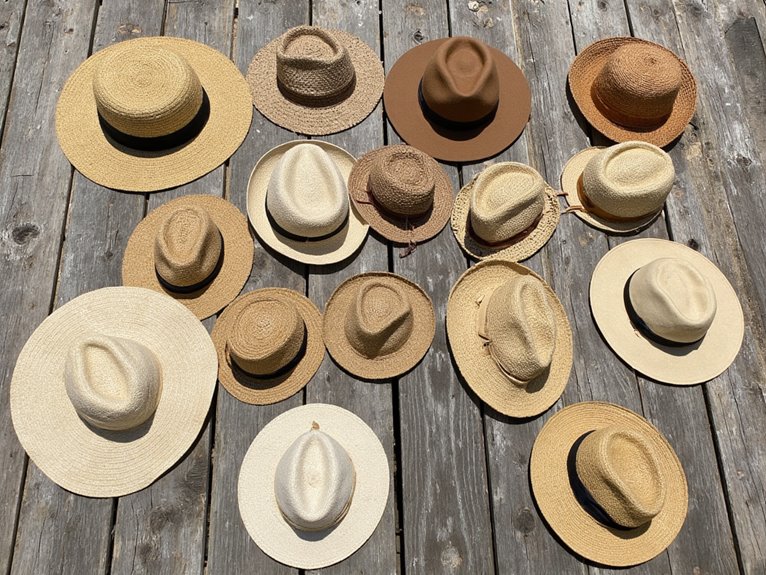Is It Bad if Sleeping Bag Is Too Big?
A sleeping bag that's too large can be a recipe for a miserable night's sleep, allowing cold air to circulate, heat to escape, and moisture to accumulate, ultimately compromising the quality of your rest. The excess space lets cold air swirl around your body, pulling heat away, and making it harder to get a good night's sleep. Moisture condenses on the inside of the bag, creating a damp, chilly environment perfect for mold and mildew growth. Want to avoid a restless night and a groggy morning? Find out how to choose the perfect fit to guarantee a cozy and dry sleeping experience.
We are supported by our audience. When you purchase through links on our site, we may earn an affiliate commission, at no extra cost for you. Learn more. Last update on 24th December 2025 / Images from Amazon Product Advertising API.
Sleeping Bag Size Matters
While a sleeping bag that's too roomy might seem like a comfortable indulgence, a bag that's too big can actually compromise the insulation and overall performance of the bag. A snug fit is essential for trapping warm air and keeping the cold out. A bag that's too large allows cold air to circulate, reducing the bag's ability to insulate. In addition, a roomy bag can be a real pain to carry around, making it a hindrance on backpacking trips. A well-fitting sleeping bag, on the other hand, is a game-changer for a comfortable and restful night's sleep under the stars. So, don't be tempted by the allure of extra space – opt for a bag that fits like a glove for a cozy and peaceful slumber.
Cold Air and Heat Loss
As the cold air circulates freely in an oversized sleeping bag, the inevitable result is a significant loss of body heat, making it even harder to get a good night's sleep. This is because the excess space allows cold air to swirl around your body, pulling heat away from you and making you shiver. It's like trying to warm up a cold room – it's just not efficient. A sleeping bag that's too large is like having a heat leak, letting all your hard-earned body heat escape into the chill of the night. The result? A restless night's sleep and a groggy morning. Who needs that?
Condensation Buildup Issues
Moisture accumulation becomes a sneaky saboteur when there's too much wiggle room in your sleeping bag, leading to a clammy and uncomfortable sleeping experience. When there's too much space, your body heat can't warm the air efficiently, causing moisture to condense on the inside of the bag. This creates a damp, chilly environment that's perfect for mold and mildew growth. As you move around, the moisture gets redistributed, making the bag heavier and colder. It's a vicious cycle that can leave you shivering and miserable. To avoid this, look for a bag that fits snugly, allowing for just enough room to move comfortably. This will help regulate body heat and reduce condensation buildup, ensuring a cozy and dry sleeping experience.
Comfort and Restful Sleep
A sleeping bag that's too spacious can also compromise the quality of your sleep, making it difficult to get comfortable and settle into a restful slumber. You'll find yourself swimming in fabric, unable to get cozy and relaxed. This can lead to a night of tossing and turning, leaving you feeling groggy and grumpy in the morning. A bag that's too big can also make you feel claustrophobic, which is ironic, given its spaciousness. You'll struggle to find a comfortable position, and even the softest of materials won't be able to compensate for the lack of snugness. A well-fitting sleeping bag, on the other hand, will cradle you in comfort, ensuring a peaceful and rejuvenating sleep.
Impact on Body Temperature
When a sleeping bag is too large, it can have a significant impact on body temperature regulation. A bag that's too roomy allows heat to escape, increasing heat loss and creating cold spots that can disrupt a restful night's sleep. As a result, the body must work harder to maintain its natural temperature, making it challenging to get a good night's rest.
Heat Loss Increases
Frequently, a sleeping bag that's too large allows cold air to circulate freely, causing heat loss to increase and ultimately impacting body temperature. This can be a major issue, especially in extreme cold weather conditions. As the body tries to maintain its internal temperature, it will expend more energy to compensate for the heat loss, leading to discomfort and fatigue.
Some key factors contributing to heat loss in an oversized sleeping bag include:
- Inadequate compression of the insulation, reducing its effectiveness
- Increased air space around the body, allowing cold air to penetrate
- Poor fit, leading to cold spots and heat loss hotspots
Cold Spots Form
Cold spots can form in an oversized sleeping bag, resulting in uneven body temperature and reducing the overall insulation efficiency. When there's too much empty space in the bag, the body's heat can't distribute evenly, creating pockets of cold air. This can be particularly problematic in colder climates or at higher elevations, where every degree of warmth counts. As a result, you might find yourself waking up chilly, even if you're using a high-quality sleeping bag. To make matters worse, cold spots can disrupt your sleep patterns, leaving you feeling groggy and tired in the morning. By choosing a sleeping bag that's the right fit, you can minimize cold spots and sleep more soundly.
Temperature Regulation
An oversized sleeping bag can also hinder the body's natural temperature regulation, as excess space allows body heat to escape, rather than being retained and circulated efficiently. This can lead to a chilly night's sleep, even in seemingly warm temperatures. When your body is working overtime to generate heat, you'll be left feeling restless and uncomfortable. To make matters worse:
- Your body will burn more energy trying to stay warm, disrupting your sleep patterns.
- You'll be more prone to overheating, causing you to wake up in a hot sweat.
- You'll experience a poor night's sleep, leaving you feeling groggy and unrefreshed in the morning.
A snug-fitting sleeping bag is essential for maintaining a comfortable body temperature and getting a good night's rest.
Effects on Sleeping Bag Insulation
A sleeping bag that's too big for its occupant can compromise the insulation's ability to retain body heat, as the extra space allows cold air to seep in and warm air to escape. This means you'll be colder than you need to be, and who likes that? The insulation in your sleeping bag is designed to trap warm air next to your body, but if the bag is too large, the insulation is spread too thin, reducing its effectiveness. Think of it like wearing a coat that's two sizes too big – it's just not going to keep you warm. A properly fitting sleeping bag guarantees the insulation works as intended, keeping you cozy and comfortable through the night. A well-fitting sleeping bag makes certain the insulation functions correctly, keeping you warm and comfortable all night long.
Moisture and Mildew Growth
When a sleeping bag is too large, it creates an environment ripe for moisture accumulation, and subsequently, mildew growth. As humidity levels rise, the excess space inside the bag traps moisture, creating a breeding ground for unwanted microorganisms. This can lead to an unpleasant, musty smell and even damage to the bag's insulation and fabric over time.
Humidity Levels Rise
High humidity levels in your sleeping bag can create a perfect breeding ground for moisture and mildew growth, which can lead to unpleasant odors and even damage to the bag's insulation.
To avoid this, it's essential to keep an eye on humidity levels. Here are some tips to help you do so:
- *Store your sleeping bag in a dry, well-ventilated area to prevent moisture buildup.*
- *Use a sleeping bag liner to absorb moisture and reduce humidity.*
- *Dry your sleeping bag regularly, especially after a camping trip, to prevent moisture accumulation.*
Moisture Traps Inside
Moisture accumulation within the sleeping bag's confines can create moisture traps, providing an ideal environment for mildew growth and unpleasant odors to flourish. This is especially true when the bag is too large, allowing for excessive moisture buildup. As you sleep, your body heat and respiration introduce moisture into the bag, which can become trapped and create a breeding ground for mildew. Before you know it, your sleeping bag is transformed into a Petri dish for funky growths. To avoid this, make certain your sleeping bag fits snugly, allowing for minimal moisture accumulation. Regularly cleaning and drying your bag can also prevent moisture traps from forming, keeping your sleeping quarters fresh and mildew-free.
Safety Concerns at Night
As the darkness falls, a sleeping bag that's too big can morph into a hazardous haven, where loose fabric can ensnare and trap, increasing the risk of accidental suffocation or entanglement. It's not just a matter of comfort; a bag that's too roomy can be a safety hazard. Consider the following potential dangers:
- Tangled limbs: Excess fabric can wrap around your arms or legs, restricting movement and making it difficult to escape in an emergency.
- Face covering: A too-big bag can slide up over your face, obstructing your airway or causing you to breathe in fabric.
- Heat retention: Trapped air can lead to overheating, causing discomfort, sweating, and even heat exhaustion.
Stay safe and snug: a well-fitting sleeping bag is essential for a restful and risk-free night's sleep.
Choosing the Right Fit
Choosing the Right Fit
Your ideal sleeping bag fit should be like a comfortable glove, snug but not constricting, allowing for ease of movement without excessive fabric getting in the way. A bag that's too big can be a real pain – literally. You'll be tossing and turning, trying to get comfortable, and still waking up with aches and pains. On the other hand, a bag that's too small can be claustrophobic. So, how do you find the sweet spot? Measure yourself from shoulder to toe, and check the bag's dimensions. Consider your sleeping style, too – if you're a restless sleeper, you may want a bit more room. With a little planning, you can find a sleeping bag that's just right – not too big, not too small, but just right.


